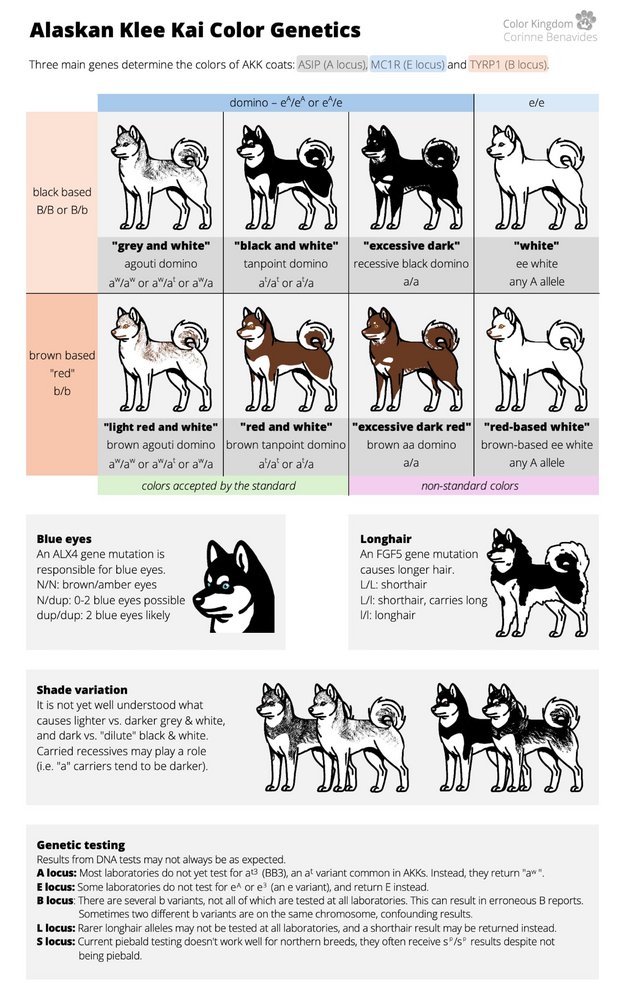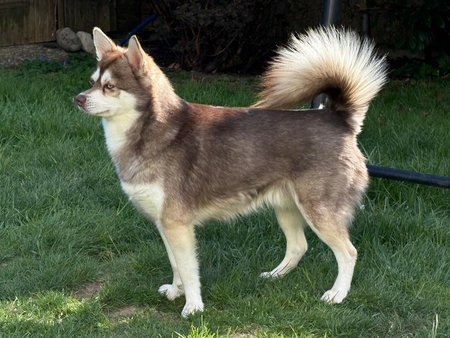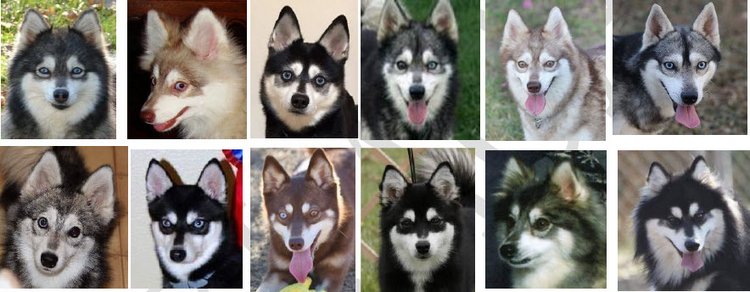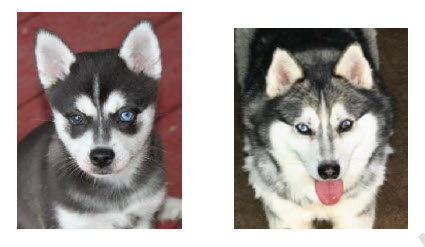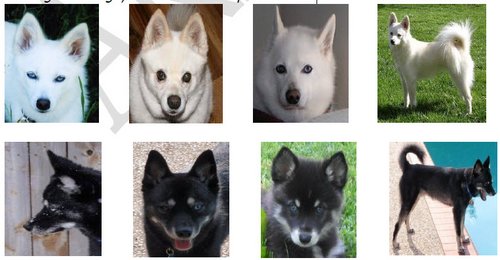General information about the AKK
Alaskan Klee Kai
Alaska, USA
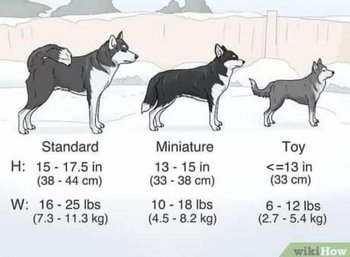
slim, long legs, tail curled upward
medium-sized, with popular almond-shaped eyes,
can have any eye color (blue, brown, amber)
or combinations of these colors
triangular, erect, facing forward
black-and-white, red-and-white, gray-and-white, and completely white
(not conforming to the breed standard)
two coat types: short and long, some with fuller hair;
fluffy undercoat – except on the tail
people-oriented, yet reserved. Sensitive.
intelligent, spirited, active, enduring, eager to learn,
loyal and faithful, friendly with family,
and rather reserved with strangers.
low-maintenance, requires occasional brushing
The breed standard according to the UKC
The Nordic breed group

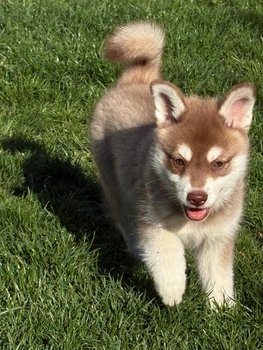
The goals and purposes of this breed standard include:
✓
To provide guidelines for breeders who wish to maintain and improve the quality of their breed
✓
To bring this breed worldwide to a state of uniformity
✓
To serve as a guide for judges

Breeders and judges have the responsibility to avoid any conditions or exaggerations that could harm the health, welfare, essence, and soundness of this breed, and must ensure that such issues are not perpetuated.

Any deviation from the following points should be considered a fault, with the severity of the fault corresponding precisely to its degree and its impact on the dog’s health and welfare, as well as its ability to perform its traditional work.
This includes, but is not limited to, functioning as a companion.

Since the Alaskan Klee Kai is a breed developed through miniaturization, attention should be paid to certain faults that are inherent to this breed.
The details of the standard
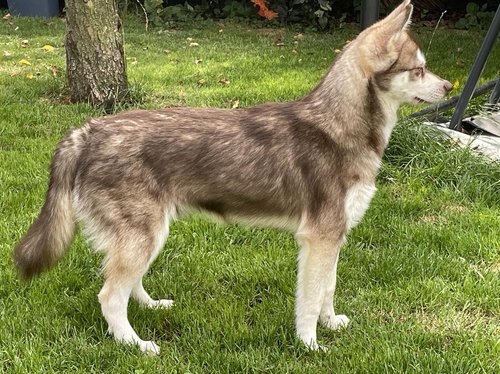
Dewclaws must not be removed according to §6 of the Animal Welfare Act!
The tail should be well-furred and set slightly below the topline. The preferred tail carriage is a loose, natural circle that falls toward the center of the back or hangs to either side of the body. The tail may hang when the dog is relaxed or in unfamiliar situations, but forms a loose, natural circle when the dog is alert or in motion. Dark hairs at the tip of the tail are preferred.
Fault: Tail deviates from the back or sides of the body when curled.
Major fault: Tail kink not caused by an injury.
Disqualification: Tail too short to curl over the back and naturally touch it.
Acceptable but less desirable markings are: a white-tipped tail and a light blaze centered on the middle of the skull and stop. Except for the blaze and the lighter spots above the eyes: the more of the lighter, contrasting color present on the upper part of the face, the less desirable the mask; and the more of the darker color present on the lower part of the face, the less desirable the mask; the least acceptable being the “Widow’s Peak” (where the entire face is the lighter color, with only a small dark area crowning the top of the head and extending a point down the center of the upper forehead).
Faults: Symmetrical division—a narrow, light-colored strip that evenly splits the dark band on the nasal bridge of the muzzle.
Disqualifying faults: Absence of the required lighter contrasting color as described above; asymmetrical markings visible when the dog is standing; any noticeable area of lighter contrasting color on the topline, known as a “cape”; a dark nasal bridge in the center of the muzzle extending down the sides of the muzzle; noticeable spots of lighter contrasting color in areas other than the spots above the eyes, the blaze on the head, or the tip of the tail.
Exclusion: Absence of a distinct mask; uniform coat color without clear and contrasting markings; albinism.
The Alaskan Klee Kai should move with the smooth, effortless, and agile gait of its Arctic ancestors. In the show ring, it should be led on a loose lead at a moderately brisk trot, demonstrating good drive from the forelegs and strong propulsion from the hind legs. Viewed from the front to the back while walking, the Alaskan Klee Kai does not single-track at a slow pace, but as speed increases, the legs gradually converge inward until the paws fall directly under the body’s centerline. When the paw prints converge, the forelegs and hind legs are carried straight forward without elbows or knees deviating inward or outward. While moving, the topline remains firm and appears level.
Faults: Short, prancing, or choppy gait; sluggish or rolling gait; crossing of legs or “crab-walking.”
(A disqualifying fault is a fault so severe that it excludes the dog from earning awards at a standard conformation show.)
Over 17.5 inches in height.
Protruding eyes.
Absence of the required lighter contrasting color as described above; asymmetrical markings visible when the dog is standing; any noticeable area of lighter contrasting color on the topline, known as a “cape”; a dark nasal bridge in the center of the muzzle extending down the sides of the muzzle; noticeable spots of lighter contrasting color in areas other than the spots above the eyes, the blaze on the head, or the tip of the tail.
The most distinctive feature of the Alaskan Klee Kai is its contrasting, color-marked facial mask with a well-defined nasal bridge in the center of the muzzle and “spectacles” around the eyes. They are very curious, intelligent, active, fast, and agile. Loyalty and alertness make the Alaskan Klee Kai excellent watchdogs, capable of raising an alarm and, despite their small size, being territorial. While they are devoted and loyal to their owners and make excellent companions, they can be somewhat reserved with strangers.
Disqualifications: Aggressiveness or extreme shyness.
The head is clean, wrinkle-free, proportional to the size of the body, and has a moderate stop. Viewed from above or from the side, the skull and muzzle taper toward the nose, forming a broad, wedge-shaped appearance.
Faults: Narrow head; insufficient stop; excessively steep stop.
The skull is slightly rounded and somewhat broad, gradually tapering from its widest point toward the eyes.
Faults: Skull too flat or too domed.
The neck is of medium length, arched, and carried proudly upright when the dog is standing. While trotting, the neck is extended, allowing the head to be carried slightly forward.
Faults: Neck too short and thick; neck too long.
The shoulders are moderately sloped backward. The shoulder blade and upper arm are approximately equal in length.
Viewed from the front, the forelegs are straight, parallel, and moderately spaced, with a moderate to fine bone structure in proportion to the dog’s size. The pasterns are flexible and strong, moderately short, and slightly sloping. The elbows are neither close to the body nor turned outward but lie in a plane parallel to the body.
Faults: Straight shoulders; weak pasterns; upper arm too short.
In profile, the body length, from the point of the shoulder to the rear end of the hip, is slightly longer than the height from the withers to the ground. The withers are only slightly higher than the croup. The topline of the back is level from just behind the withers to the loin. The gently sloping croup is never so steep that it restricts the drive of the hind legs.
The ribs are well-sprung from the back, forming a strong back that tapers downward and inward to an almost heart-shaped cross-section.
The loin is strong and short, but narrower than the chest, with a slight tuck-up.The chest is moderately broad and reaches the elbows. In side profile, the deepest point of the chest is directly behind the foreleg. The forechest should extend in a shallow oval shape in front of the forelegs, but the sternum should not be excessively pointed.
Faults: Chest too broad; barrel-shaped or flat ribs; weak or “roached” back; hindquarters set too high.
Viewed from the rear, the hocks are parallel to each other and moderately spaced. The hind legs are moderately well-angulated at the stifle and hock joints. The rear hocks are well set and perpendicular to the ground when viewed from any angle.
Serious faults: Excessive angulation; hocks turned inward or outward; thin or weak thighs.
Note: At UKC conformation shows, this breed is exhibited by variety in the following order: Toy, Miniature, Standard.
Source: UKC
The Illustrated Breed Standard according to the UKC
Using the facial mask of the Alaskan Klee Kai as an example
Light spots above the eyes; lighter hair on the inside of the ears; a dark coloration at the tip of the tail; a full facial mask consisting of a dark coloration of the skull that extends over the bridge of the nose and around the eyes, or a dark contrasting “spectacles” pattern around the eyes, provided it does not extend more than halfway down the length of the muzzle (or face); a continuous, undivided dark nasal bridge extending from the forehead over the top of the muzzle to the nose, without running down the sides of the muzzle; and a contrasting lighter color extending over the cheeks to a line between the outer corners of the eyes and the base of the ears, along the sides of the muzzle, under the jaw, and down the throat. The hair on the inside of the ears should also display the same lighter contrasting color.
A white-tipped tail and a light blaze in the center of the skull and stop. Except for the blaze and the light spots above the eyes, the mask is less desirable the more of the lighter contrasting color is present on the upper part of the face; and the more of the darker color is present on the lower part of the face, the less desirable the mask. The least acceptable is the Widow’s Peak, where the entire face is the lighter color, with only a small dark area crowning the top of the head and a point extending down the center of the upper forehead.
(A) Absence of the required lighter contrasting color as described in the “Color” section;
(B) asymmetrical markings visible when the dog is standing;
(C) a pronounced area of lighter contrasting color on the topline, known as a “cape”;
(D) a dark stripe in the center of the muzzle extending down the sides of the muzzle;
(E) pronounced spots of lighter contrasting color in areas other than the spots above the eyes, the blaze on the head, or the tip of the tail.
